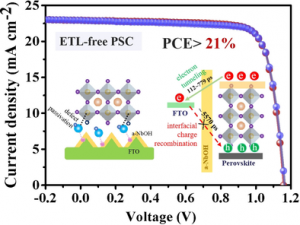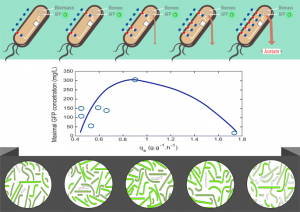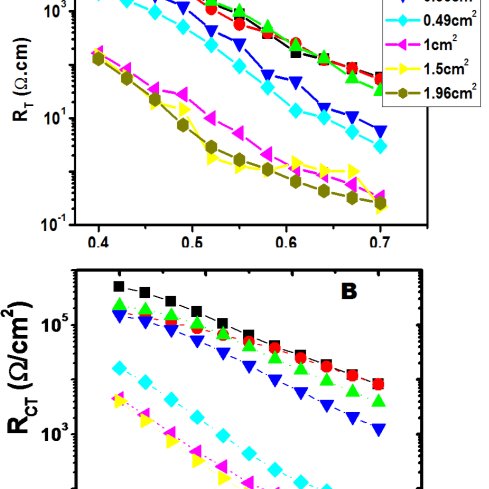Cusabio Transport Recombinants
Abstract
Solar cells using perovskite as a semiconductor pigment have recently attracted great interest due to their remarkable solar-to-electrical energy conversion efficiencies and ease of processing. In this direction, various device architectures and materials have been employed, and attempts have been made to elucidate the underlying operating principles. However, the factors that govern the performance of perovskite devices are still obscure.
For example, interpretation of electrochemical impedance spectroscopy (EIS) is not straightforward and the complexity of equivalent circuits makes it difficult to identify transport and recombination mechanisms in devices, especially those that determine device performance. Here we carry out a complete and complementary characterization of perovskite solar cells using a series of small perturbation techniques: EIS and intensity-modulated photocurrent and photovoltage spectroscopy (IMPS/IMVS). Using IMPS allowed us to identify two transport times separated by 2 orders of magnitude and with opposite voltage dependencies.
For recombination, a good agreement was found between the lifetimes obtained by IMVS and EIS. The feature associated with recombination and charge accumulation in an impedance spectrum was experimentally identified through correlation with the IMVS response. This correlation paves the way to reconstruct the current-voltage curve using a continuity equation model for transport and recombination in the working device. The adopted methodology demonstrates that complementary techniques facilitate the interpretation of EIS results in perovskite solar cells, allowing us to identify transport recombination mechanisms and providing new insights into the steps that determine efficiency.

Purity: >85% (SDS-PAGE)
Destination Names: Mert
Uniprot No.: P13112
Alternative Names: merT; mercury transporter protein Mert; Mercury ion transport protein
Species: Serratia marcescens
Protein length: Partial
Label information
The following labels are available.
- N-terminus His-tagged
- Without tags
- The type of label will be determined during the production process. If you have specified a tag type, let us know and we will develop the specified tag preferentially.
Form: Lyophilized powder
Buffer before lyophilization: Tris/PBS based buffer, 6% trehalose, pH 8.0
Reconstitution
We recommend that this vial be briefly centrifuged before opening to bring the contents to the bottom. Reconstitute protein in sterile deionized water at a concentration of 0.1-1.0 mg/mL. We recommend adding 5-50% glycerol (final concentration) and an aliquot for long-term storage at -20℃/-80℃. Our final default glycerol concentration is 50%. Customers could use it for reference.
Storage Conditions
Store at -20°C/-80°C upon receipt, need to be aliquoted for multiple uses. Avoid repeated cycles of freezing and thawing.
Shelf life
Shelf life is related to many factors, storage condition, buffer ingredients, storage temperature and the stability of the protein itself. Generally, the shelf life of the liquid form is 6 months at -20°C/-80°C. The shelf life of the lyophilized form is 12 months at -20°C/-80°C.

Delivery time
The delivery time may differ depending on the form or location of purchase, consult your local distributors for the specific delivery time.
Note: All of our proteins are shipped with regular blue ice packs by default. If you request shipping with dry ice, please contact us in advance and additional fees will be charged.
Notes: Repeated freezing and thawing is not recommended. Store working aliquots at 4°C for up to one week.
Freight transport and load recombination
Charge carrier transport and carrier recombination govern the operation of all electronic devices, including those that use organic semiconductors. Therefore, understanding charge transport and charge recombination in organic semiconductors is a prerequisite for successfully designing future high-performance organic electronic devices. In our group, we study the transport of charge carriers through the fabrication of field-effect transistors and what are known as single-carrier devices.
Understanding the energy of organic materials allows us to isolate either hole or electron transport by choosing electrode materials with the correct work functions relative to the boundary energy levels of a given organic compound. Analysis of the current-voltage characteristics of these devices provides information on how fast these charge carriers are transported through organic material and whether the organic material under investigation possesses the right properties to be used in high-performance organic solar cells. , field-effect transistors, or light-emitting diodes.
We employ a variety of techniques to understand recombination mechanisms in organic semiconductors. The study of double carrier devices allows us to investigate the process of recombination of holes with electrons. This process is a fundamental loss mechanism in organic solar cells, but it is essential for the operation of light-emitting diodes. Furthermore, we investigate recombination mechanisms by observing photoluminescence, electroluminescence, quantum efficiency, and impedance response of organic electronic devices as a function of temperature and excitation energy.

